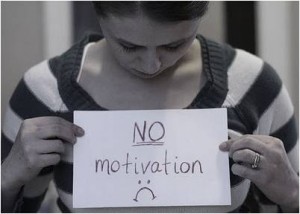By Doug Stephens
When we talk about the future of the retail experience the conversation often turns to obvious trends in technology, media and consumer behavior which is understandable given the sweeping change taking place on these fronts. What is no less important but far less talked about, however, are the changing attitudes, behaviors and underlying needs of the people who actually animate these retail experiences – the tens of millions of retail store employees worldwide.
talked about, however, are the changing attitudes, behaviors and underlying needs of the people who actually animate these retail experiences – the tens of millions of retail store employees worldwide.
To that end, if you haven’t read Daniel Pink’s most recent work, Drive, the Surprising Truth about What Motivates Us, you should. The book is a brilliantly crafted argument in favor of a wholesale rethinking of traditional carrot and stick types of incentive plans. Pink makes the case that there’s a huge disconnect between “what science knows and what companies do” when it comes to motivating their workforce. He cites the failure of many companies to address the more intrinsic, sustainable and powerful drivers of human performance at work.
The book documents an abundance of credible scientific and social research that suggests that traditional do-this-get-that reward systems not only often have a minimal effect on performance but can actually have a negative and stifling impact on work that relies on creativity and problem solving. Only in the most menial of tasks do traditional reward-based incentives induce improved performance, largely due to the simplicity and straightforward nature of the objectives involved. In other words, where the objective is obvious and the process to achieve it is clear, traditional incentives work. However, as soon as goals becomes more nebulous and processes more dynamic or intuitive, these same traditional approaches to motivation fail.
Is Your Incentive System a Relic?
Surprisingly, many of the incentive and performance schemes companies operate with today actually have their roots in the post-industrial revolution school of thought known as scientific management, originated over a century ago. Focusing largely on manual tasks, the goal of scientific management was to use extrinsic influences to generate improved labor productivity. In what were mostly industrial conditions, traditional incentives based on rewards and losses worked because the tasks in question were largely functional in nature – eg: produce 10 more units per hour and get an extra ten dollars. What more contemporary studies reveal however is that these same kinds of external stimuli tend not to work when the task at hand involves creating, innovating or problem solving.
Rewarding Creativity
Simply throwing commission or bonuses at roles where creativity is required is proven to have very little positive impact and may in fact reduce performance and job satisfaction.
Instead, suggests Pink, once people are being paid adequately and fairly, so as to take the issue of money off the table, companies should really focus their attention on the higher human needs to motivate creative workers. What are those higher needs? Pink suggests that the autonomy to own one’s work, opportunity to develop mastery at what we do and above all, a sense of purpose greater than ourselves are the true drivers of performance.
Is Selling is Creative?
I would argue that active selling – not to be confused with passive service, requires significant creativity and problem solving ability. Unlike a service role, a true salesperson operates under dynamic circumstances with each customer’s needs being slightly different than the next. They rely on their creativity and ingenuity to develop unique product and service solutions to meet each of those needs. Selling, if done well, is hardly a routine endeavour and yet for over a century we’ve been incentivising salespeople as though they worked on an assembly line!
So the question for retail H.R. professionals is, how does your organization characterize the sales role in your stores? Is it seen as a largely menial, repetitive and systematic function? Or is it seen as a dynamic and creatively centered position? Does your staff simply service customers in a robotic manner or are they true salespeople? Is your store experience mostly self-service or does it hinge on personalized human interactions?
Aligning Expectations
This alignment of leadership on these fundamental expectations of the sales function is critical. Until you determine the experience you hope to deliver to consumers, you can’t fully articulate the organizational expectations of your salespeople. And without clear expectations, you can’t properly design a system to motivate the right behaviors. In fact, you might be using incentives that actually de-motivate the behaviors you most want to promote. To put it bluntly, your current incentive plan might just be killing your sales.

